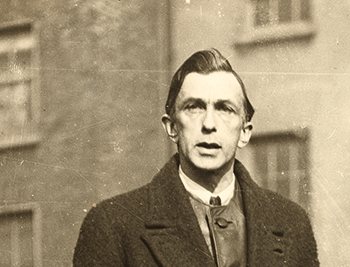THE IRA REPUDIATES THE AUTHORITY OF DÁIL ÉIREANN
Published in Issue 2 (March/April 2022), Reviews, Volume 30By Joseph E.A. Connell Jr
Following the Treaty debates, the most ‘republican’ members of the IRA, the Dáil and the public still refused to accept the Treaty or the authority of the newly established Provisional Government. Typical of the former was Rory O’Connor, IRA GHQ’s director of engineering during the War of Independence, when his specialised engineering and signalling skills had been essential to the development of the Dublin Brigade. O’Connor and his comrades had sworn an oath to uphold the Irish Republic. ‘Oh we must work it for all it’s worth. If I could get enough to support me I would oppose it [the Treaty] wholeheartedly’, O’Connor said to a fellow-IRA man, Liam Archer.
On 26 March 1922, anti-Treaty officers of the IRA held a convention in Dublin at which they rejected the Treaty and repudiated the authority of the Dáil, but were prepared to discuss it. The convention reconvened on 9 April, and a new army constitution was ratified and a new GHQ created. Asked by a journalist whether this meant that they were proposing a ‘military dictatorship’, O’Connor replied, ‘You can take it that way if you want’. Fellow anti-Treatyite Liam Lynch told the Dáil:
‘There would be no question of civil war here now were it not for the undermining of the Republic. The Republic has been deserted by those who state they still intend to work for a Republic … We in the Army, who have taken this step, have been termed “mutineers”, “irregulars”, and so forth. We are not mutineers, because we have remained loyal to our trust. We are not mutineers except against the British Government in this country.’
On 13 April 1922, Dublin’s Four Courts were occupied by the IRA, led by O’Connor. The following proclamation was issued:
‘Fellow citizens of the Irish Republic. The fateful hour has come. At the direction of the hereditary enemy our rightful cause is being treacherously assailed by recreant Irishmen. Gallant soldiers of the Irish Republic stand rigorously firm in its defence. The sacred spirits of the Illustrious Dead are with us in this great struggle. “Death Before Dishonour.” We especially appeal to our former comrades of the Irish Republic to return to that allegiance and thus guard the Nation’s honour.’
They intended to provoke British troops (still in the country) into attacking them, which they thought would restart the war with Britain and reunite the IRA against their common enemy. They also occupied other smaller buildings associated with the former British administration, such as the Ballast Office and the Freemasons’ Hall in Molesworth Street. On 15 June, O’Connor sent men out to collect the rifles of the newly formed Civic Guard, who had mutinied.
Michael Collins tried desperately to persuade O’Connor and his men to leave the building during the next three months. At another IRA convention in June, the executive was split over whether the Irish government should demand that all British troops leave within 72 hours. The motion was defeated, but the IRA split into two factions opposed to the government—one conciliatory, led by Liam Lynch, Seán Moylan and Liam Deasy, and the other less moderate, led by Tom Barry and Joe McKelvey.
When Sir Henry Wilson was assassinated on 22 June, Lloyd George wrote an angry letter to Collins which stated: ‘… still less can Mr Rory O’Connor be permitted to remain with his followers and his arsenal in open rebellion in the heart of Dublin … organizing and sending out from this centre enterprises of murder not only in the area of your Government’.
The fate of the IRA in the Four Courts was sealed.
Joseph E.A. Connell Jr is the author of The Terror War: the uncomfortable realities of the Irish War of Independence (Eastwood Books).

















